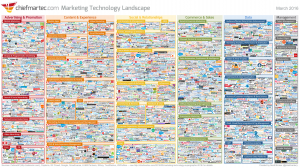Most early adopters will admit there’s something exhilarating about being among the first customers of a new company or the first to use the latest tech and tools to improve their lives. While just 15 percent of the population fits into this group, they have a lot in common.
Early adopters are connectors with large networks, they quickly recognize the value of new tech and they’re much more willing to take risks.
In philanthropy, while historically slower than the for-profit sector to innovate, early adopters are pushing the boundaries of what’s possible, leveraging new technology to become more efficient raising more money to support their mission as a result.
In communications, early adopters are often using the latest technology to advance their cause or mission. A decade ago, having a Facebook page and a blog was considered “doing social media.” The rate of innovation in technology and communications have made these tools passe. If you need proof, just take a look at the marketing technology landscape — thousands of solutions are now available.

Today, it’s about how you can create the right pairing of ideas and tools to meet your philanthropic goals. Here’s how you can take steps to act like an early adopter in philanthropy:
- Resolve to be more efficient – There’s no doubt you wish you had more hours in a day. Early adopters understand technology can help them increase efficiency and improve results. When social-sector organizations become early adopters of the right tools, they begin to reduce redundancies. Pairing multi-channel solutions with the appropriate technology stack is part of how nonprofits can embrace digital moves management and reduce inefficiencies that cost them precious time and support. Donor development and marketing teams are developing common goals and are using technology to drive, qualify and nurture more donor prospects to their organizations.
- Think like a donor – When you commit to thinking like a donor, you begin to understand the ways your target audience is using technology to benefit their lives and how they are using it to learn more about your organization before ever talking to someone on the phone. According to the 2016 Global NGO Online Technology Report, the majority of donors across generations (Boomers, Gen X and Millennials) prefer to give online and are most inspired to give after seeing something on social media and through email.
- Learn to connect – As we mentioned earlier, prospective donors are learning more about your organization before you ever get the chance to have a phone call or face-to-face meeting. Early adopters recognize the value and ability of technology to connect people. Rather than dismissing communications technology as a fad, early-adopter nonprofits and foundations are embracing how the growing social technology ecosystem can help them connect with and better understand their donors, beneficiaries and grantees.
- Be curious – When strapped for time in a resource-challenged and competitive nonprofit environment, some organizations operate from a place of fear. These organizations end up doing things as they have always been done because it feels safe and comfortable. Our world is changing rapidly and staying the same isn’t helping anyone and it isn’t helping your organization garner more support. Being curious means trying to new things that align with your goals. For some it might mean experimenting with newer ways to tell stories — through Instagram or SnapChat, for example. For others, it means breaking down barriers between functions within your nonprofit to help your staff see the bigger picture.
- Combine high tech with high touch – There will always be value in personal interactions. Using digital tools enhances those interactions, strengthens relationships and helps you receive valuable feedback that helps guide your next meeting or event.
Taking the first steps to behave more like an early adopter will help you form a fresh mindset — one that is focused on advancing goals, driving donations, connecting staff and improving your organization’s overall purpose in philanthropy.



